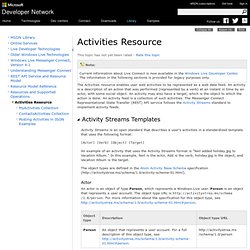

Why f8 was good for the open web. Disclosure: I joined Facebook last Fall.

Over a year ago I predicted that they would open up. It’s easy as a technologist to think about openness solely in terms of technology, but openness is broader than that. Openness of technology means that others can build using the same tools that you do. Openness of data means that developers can build innovative products based on APIs that weren’t previously possible. And openness between people is what happens when when all of these things come together to give people better ways to share information. Sure, some things Facebook launched are more “open” than others, but here is what’s exciting me: 1) No 24-hour caching limit: Developers have found that one of the most annoying policies was only caching data from the Facebook API for twenty-four hours at a time. Now the first question you’re probably asking is if Facebook used PubSubHubbub; at least that was my first question to our engineering team a few months ago.
Activities Resource. The Activities resource enables user web activities to be represented as a web data feed.

An activity is a description of an action that was performed (represented by a verb) at an instant in time by an actor, with some social object. An activity may also have a target, which is the object to which the action is done. An activity feed is a collection of such activities. The Messenger Connect Representational State Transfer (REST) API service follows the Activity Streams standard to implement activity feeds. Activity Streams is an open standard that describes a user's activities in a standardized template that uses the following format: [Actor] [Verb] [Object] [Target] An example of an activity that uses the Activity Streams format is "Neil added holiday.jpg to Vacation Album.
" The object types are defined in the Atom Activity Base Schema specification ( Actor An actor is an object of type Person, which represents a Windows Live user. Verb Object An object is acted upon. Target. Unicasting , Broadcasting And Multicasting New. Brad's Thoughts on the Social Graph. Translations: [ Беларускі ] I've been thinking a lot about the social graph for awhile now: aggregating the graph, decentralization, social network portability, etc. If you've seen me at any conference recently, I probably talked your ear off about it. I've gotten good at my verbal/visual presentations, showing my slides , pictures of graphs, and adapting my delivery to you based on your background, facial expressions, questions, etc.
This is all a lot harder to do in a blog post where the audience is so diverse, so I've been lazily putting it off. I was also afraid that if I left anything out, I'd get flooded with comments like But what about __________? First off, before I explain what I've prototyped so far, and what I want to build (or see built) next, let me declare the problem statement, as I see it, and the underlying assumptions I've been making: Problem Statement: ¶ Facebook's answer seems to be that the world should just all be Facebook apps.
Goals: ¶ Non-Goals: ¶ Www.w3.org/2008/09/msnws/report.pdf. Stack Overflow. Index of /hhalpin/homepage/presentations. A Standards-based, Open and Privacy-aware Social Web. The Social Web is a set of relationships that link together people over the Web.

The Web is an universal and open space of information where every item of interest can be identified with a URI. While the best known current social networking sites on the Web limit themselves to relationships between people with accounts on a single site, the Social Web should extend across the entire Web. Just as people can call each other no matter which telephone provider they belong to, just as email allows people to send messages to each other irrespective of their e-mail provider, and just as the Web allows links to any website, so the Social Web should allow people to create networks of relationships across the entire Web, while giving people the ability to control their own privacy and data.
The standards that enable this should be open and royalty-free. This section describes the status of this document at the time of its publication. 1. Further, the members of the XG conclude: 2. 3.